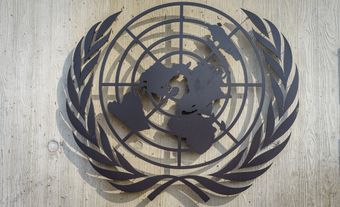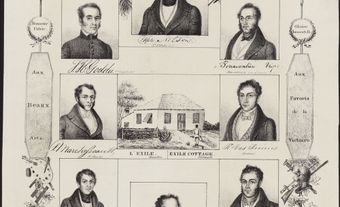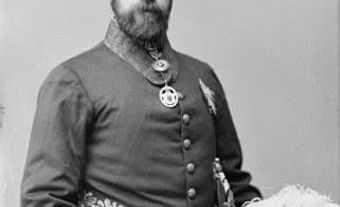Conservatism
The range of beliefs among those who call themselves conservatives in Canada is wide. Some, like the policy analysts of the Fraser Institute or like Stephen HARPER, the leader of the CANADIAN ALLIANCE, believe in a policy agenda of lower taxes, greater deregulation and increased privatization. Others, who are often called RED TORIES and who overwhelmingly make their home in the Progressive Conservative Party, support a strong state that will provide for the least well off in society and that will actively address issues of regional inequality.
Historical Canadian conservatism arose from British Toryism of the preindustrial era. It was reinforced by the influx of United Empire LOYALISTS (UELs) who fled after the English defeat in the American Revolution. Most UELs were MONARCHISTS who favoured an organic and hierarchical society with due respect for law and order. These ideals were generally shared by immigrants from Britain who arrived in the first half of the 19th century. Conservative impulses had also long prevailed among French Canadians as a result of the dominance of the Roman Catholic Church and the determination of a conquered people to preserve their language and culture.
Where the American Declaration of Independence espoused the right to "life, liberty and the pursuit of happiness," the BRITISH NORTH AMERICA ACT enshrined the norms of PEACE, ORDER AND GOOD GOVERNMENT. Whatever else it may entail, conservatism is based on a respect for lawful authority, tradition and continuity in human affairs. Conservatives do not oppose necessary reforms, but do deplore changes that are produced by abstract reason and not rooted in communal experience. They agree with Edmund Burke's dictum, "A disposition to preserve, and an ability to improve, taken together, would be my standard of a statesman." Or, in the words of historian W.L. MORTON, "[Canadian conservatism] has remained traditional and constitutional, progressive and pragmatic. It has concerned itself with sound administration of existing laws rather than the forming of new laws, and with economic development rather than political reform."
Canadian conservatism, though, was never exclusively Tory. From the beginning, the ideas of John Locke (1632-1704), the founder of the British liberal philosophical tradition of civil and religious liberty, have been central to the beliefs of both Tory and liberal-leaning conservatives. When Sir John A. MACDONALD brought the Conservative Party into existence in 1854, the Tory strain and the liberal strain were already present.
Traditionally, Canadian conservatives felt a deep loyalty to Britian, but after the Second World War the appeal of the COMMONWEALTH began to fade. In general, those Conservatives who come from the Tory tradition are likely to be nationalists, because they value the collective community that has grown in Canada over the years. Those Conservatives who are nurtured by the liberal tradition are more likely to favour free trade and closer ties with the United States.
Many Conservative governments of Tory mould since Macdonald's time have, in the words of Robert Stanfield, believed in "strong and effective government but ... saw a limited or restricted role for government." Canadian Conservatives have launched social-welfare programs and many public enterprises in areas such as transportation, broadcasting, banking, grain marketing and hydroelectric power. At its worst, Canadian conservatism has been conformist and authoritarian, insufficiently appreciating Canada's racial and regional diversities. Conservative dedication to "peace, order and good government" has evoked a popular impression of conservatives (and especially Progressive Conservatives) as a privileged elite - white, Protestant and largely affluent. At its best, traditional Canadian conservatism has been compassionate and pragmatic, creating a careful balance between the conflicting claims of social order and individual liberty.
Since the election of Margaret Thatcher as prime minister of the United Kingdom and Ronald Reagan as president of the United States, the appeal of neo-conservatism has grown substantially in Canada. The MULRONEY Conservative government of 1984-1993 negotiated a FREE TRADE agreement with the US (in contrast to traditional conservative antipathy to closer continental trade ties) and sought to decrease government involvement in the economy.
In 1987 a new conservative movement arose in Canada. Based in Alberta and led by Preston MANNING, it was given its national voice by the newly created REFORM PARTY. It quickly defined a new sort of conservatism. Its policies were based on a radical reduction of the responsibilities of the state in both social and economic fields and a substantial transfer of responsibilities from Ottawa to the provinces. The Canadian Alliance succeeded the Reform Party in 2000. The PC provincial governments of Ralph KLEIN in Alberta and Mike HARRIS in Ontario (with his Common Sense Revolution) pursued many of the same policies.
There are many other groups that call themselves conservative in Canada, including some that are overtly racist and others that are concerned with single issues such as gun control. Perhaps the largest and most influential group are some Roman Catholic and some Evangelical Christians who have become politically active in response to Supreme Court rulings on abortion and gay rights issues. They seek political change that will reverse these judicial changes and will restore the traditional family and Judeo-Christian values.

 Share on Facebook
Share on Facebook Share on X
Share on X Share by Email
Share by Email Share on Google Classroom
Share on Google Classroom


